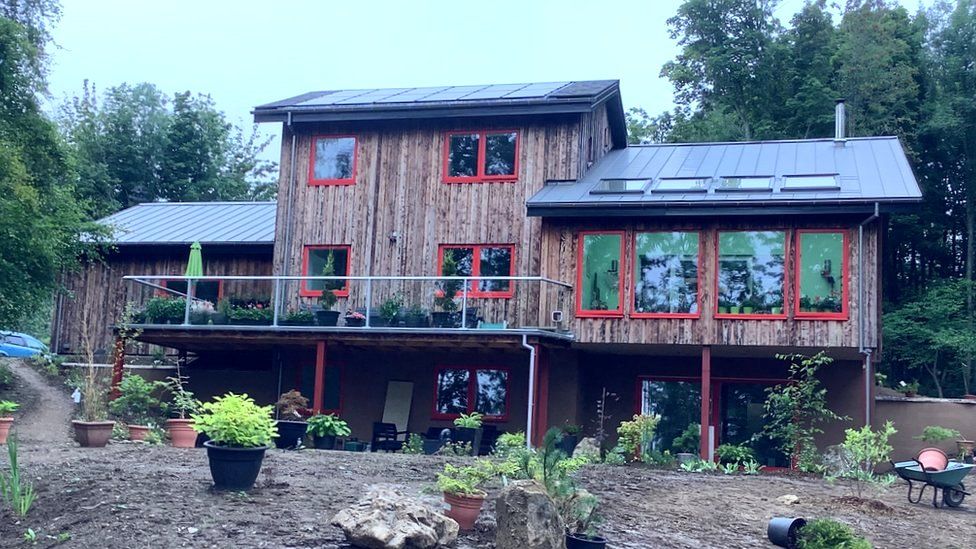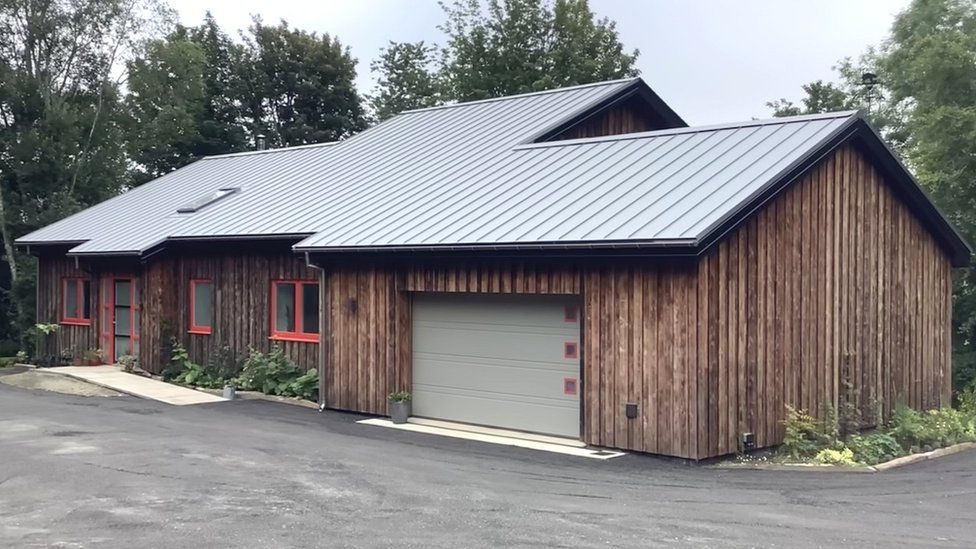
Andrew Bennett is describing the moment he learned that despite building a brand new, super energy efficient home, he couldn’t be able to borrow money against its value, a process known as equity release.
The 73-year old and his wife had spent all their savings, £600,000, and three years building their eco-friendly home.
But now their financial plans are in tatters as he can’t access the capital invested in the house.
No provider in the equity release market will lend against the property because it’s been built using a construction method called Insulated Concrete Form (ICF).
Along with solar panels and triple glazing, it makes Andrew’s home very energy efficient. But because it’s not a standard brick building with a tiled, sloping roof, equity release providers aren’t interested.
“Well we’d like about a third of what the house cost to put half of that into premium bonds, so we’ve got a cash available. And to spend on a few frivolous things [for his bucket list].”
Andrew, who spent a 32-year career as a commercial airline pilot, says that bucket list includes things such as “half an hour in a Spitfire, I’d like to buy a classic car and I’ve got three cars in bits I’d like to pay someone to fix before I pass away”.
But all those plans are now in disarray.

What is equity release?
- Under equity release, homeowners borrow money against their home’s value
- They don’t repay anything until it’s sold (by them or their estate if they die)
- 90% of the equity release sector are members of industry body Equity Release Council.
- It has a set of rules and principles members must adhere to

“I’d seen lots of adverts in the papers and on TV advertising equity release so it seemed like a slam dunk,” he says.
“But when I enquired, as soon as it got to the point of what the building was made of, ICF, it was a complete no-no.
“[The] house has been built according to building regulations, planning permission, it’s been surveyed, it’s all been approved but they just will not consider equity release on a house made of ICF.
“It’s a lot more solid than any brick built property. It’s prejudice that’s unwarranted.”

Equity release is big business in the UK. In the three months to September alone a billion pounds was lent to more than 10,000 people.
But Amanda Moore, a senior adviser at UK’s largest equity release advice firm, Key, says Andrew’s property is too much of a risk for providers.
“The reason why providers aren’t accepting this offer is because it’s too risky for them. Typically equity release is for the long term and it’s an increasing debt rather than a reducing debt.
“So the risk is very different to conventional mortgage lending because construction type is classed as non-standard type.
That’s despite the Council of Mortgage Lenders nearly a decade ago classifying the ICF construction method as a standard type of construction.
“I wouldn’t say Andrew is being punished by the [equity release] market, but he is possibly a victim of circumstance.”
But Amanda is keen to stress people thinking of building their own home shouldn’t be put off an eco-friendly construction method because of what’s happened in Andrew’s case.
“The equity release market isn’t looking to punish people who do the right thing, [Andrew] is a victim of being innovative and ahead of the game compared to more commonplace buildings the market is used to dealing with.
“Our advice isn’t ‘don’t build an eco-friendly home’, but instead [if you’re hoping to secure equity release in the future] come to us first and we can tell people what will and won’t work.”


